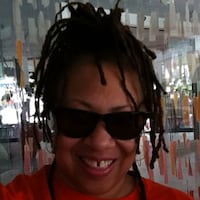While an engineering student, Aaron F. Henderson landed a job recording chapel services and performances of the choir for then-Tuskegee Institute.
He’d arrive at 6 a.m. to set up microphones and the sound system.
He wasn’t sure he would like the job, but it was during the Vietnam War and the check would help pay the bills.
“If you missed a semester, you were in Vietnam,” he said.
So, as he sat in the upper level of the school’s chapel — called the crow’s nest — listening to the melodic voices waft through the building, Henderson’s mind would drift back to hearing some of those same songs while spending time with his paternal grandmother in Birmingham.
His grandmother, who was very active in the Baptist church, would hum and sing spirituals as she ironed clothes for white customers.
“I’ve been buked and I’ve been scorned/ I’ve been buked and I’ve been scorned/ Children I’ve been ‘buked and I’ve been scorned/ Tryin’ to make this journey all alone.”
One of the best aspects of the job was he got to sing along while in the tower, although no one could hear him.
“I don’t really have a voice, but I got to learn them (the songs),” he said.
Credit: John Stephens / JAS Photo
Credit: John Stephens / JAS Photo
Years later, Henderson, 72, a resident of Decatur, would tell that story to his son, Onaje Henderson, an art collector and also an engineer who went to Tuskegee University.
Knowing of his father’s longtime love of drawing and painting, his son encouraged him to put those memories to canvas.
Recently, the elder Henderson released a coffee-table book, “Fight On: A Visual Interpretation of African American Spirituals,” which is available at the ZuCot Gallery in downtown Atlanta or through its website.
The 160-page book contains lyrics from old spirituals that Henderson has interpreted in colorful paintings.
“I’m a narrative artist, so I paint from stories,” said Henderson.
And spirituals often told stories and sometimes contained hidden messages, said Oral Moses, professor emeritus of voice and music literature at Kennesaw State University, who is an expert on African American music.
“People sang about what they had to deal with in everyday life,” said Moses, who was not involved with the project. “They were responding to what happened to them.”
Songs with lyrics in the book include “Sometimes I Feel Like a Motherless Child,” “Swing Low, Sweet Chariot,” and “Run to Jesus.”
Henderson began researching spirituals in 2008. He spent many hours at the Auburn Avenue Research Library. He collected lyrics to more than 1,000 songs.
He wanted to know who created the songs and what their lives were like.
He enlisted the help of scholars whom he found through his research.
They traced some of the spirituals and songs to slavery. He often found them referred to as “slave poets.”
One thing they noticed was there was no hate in the lyrics they reviewed.
That perplexed Henderson.
“How can these people who have been persecuted every day of their lives not include a word of hate about the people persecuting them?” he asked. “There were strong statements like ‘And before I’d be a slave, I’ll be buried in my grave.’ It was that strength of the song.”
The series is ongoing. He may add more paintings to the series as times goes by.
“It depends on what I’m feeling at the time,” he said. So far, there are about 70 paintings in the series. So far.
He selected songs that included messages of strength, resilience and hope that even if things were not better for them, then it would be better for others coming after them.
Credit: John Stephens / JAS Photo
Credit: John Stephens / JAS Photo
Henderson started drawing as a child. He grew up in Birmingham when there was “serious segregation. At one time, it was the most segregated place in America, if not the world. You had your own movie theaters and restaurants and everything.”
His dad was a salesman and his mother worked for a spice company.
Henderson developed an early interest in art. When he was younger, he used to draw images from the comic strips over and over again. When he had a homework assignment, he would include one of his drawings.
That creativity was always encouraged at home.
“I know they didn’t have much money, but my father would take my work and frame them. He’d hang it on the walls of the house,” said Henderson. HIs cousin used to do paint-by-numbers projects and would sometimes let him finish them.
One day, Henderson’s father came home with two blank canvases.
He asked his son if he had any paint left.
“He said you can make up your own numbers now. That’s what I’ve basically been doing ever since.”
NONFICTION
“Fight On: A Visual Interpretation of African American Spirituals”
by Aaron F. Henderson
160 pages, $75
About the Author
Keep Reading
The Latest
Featured


